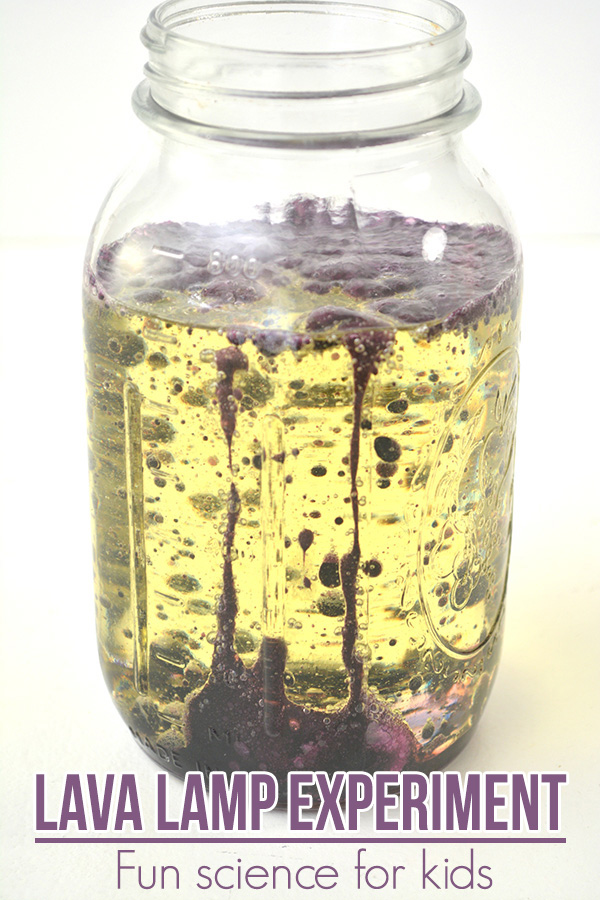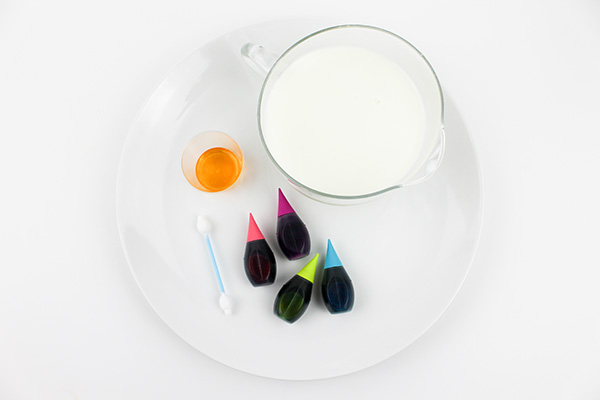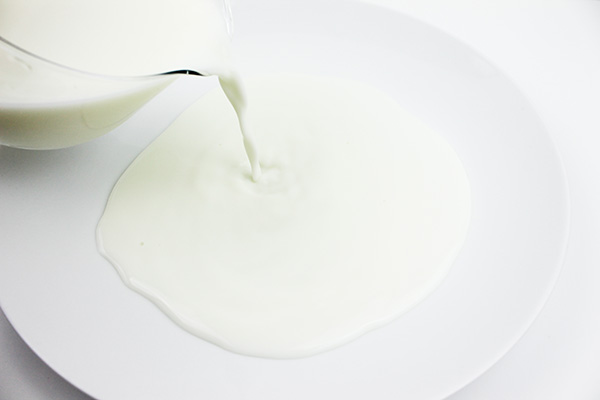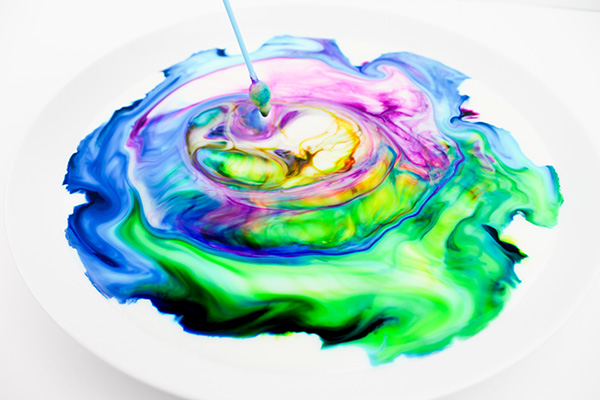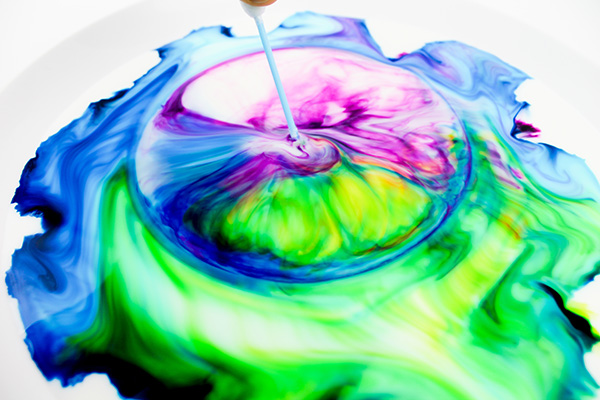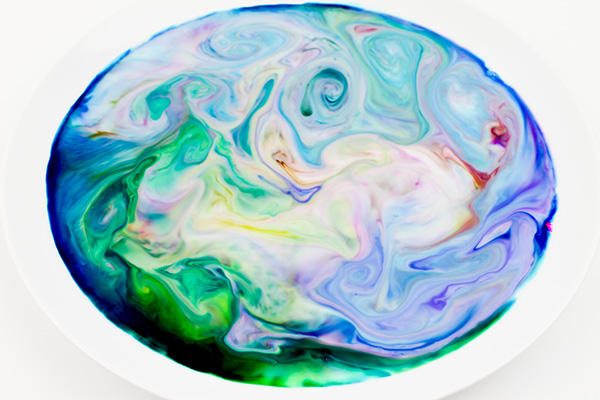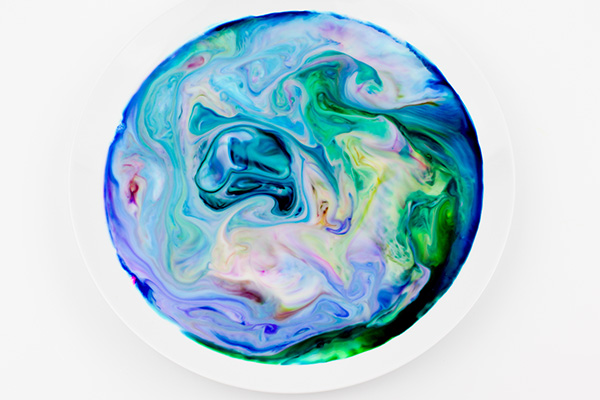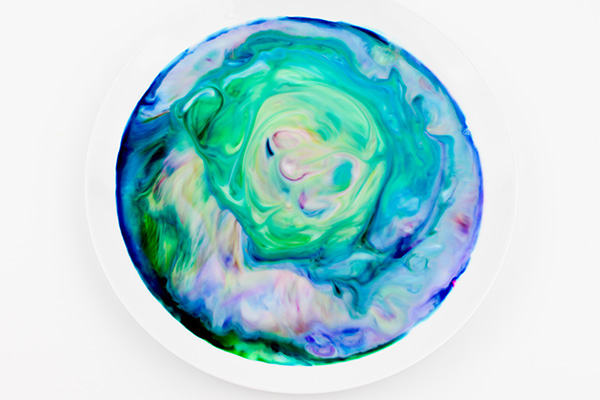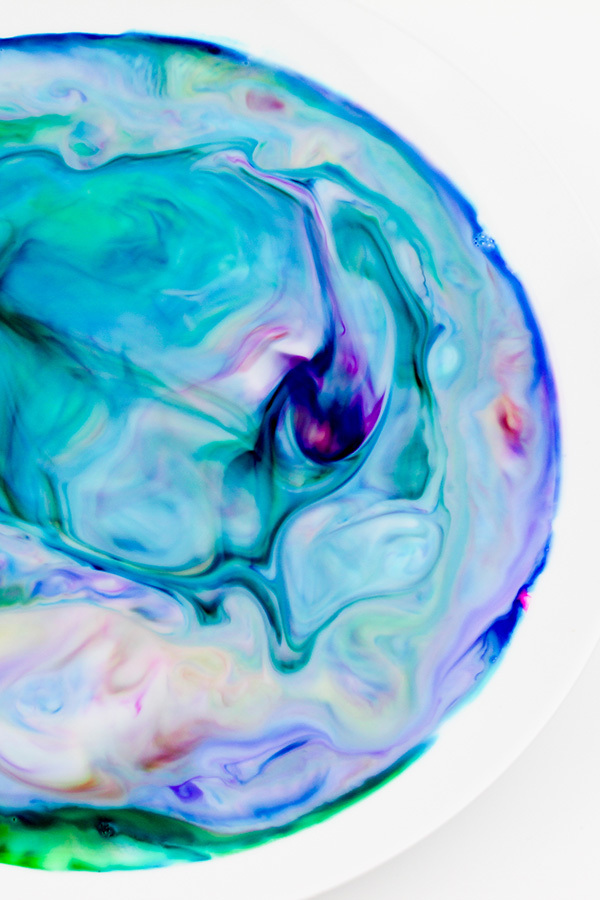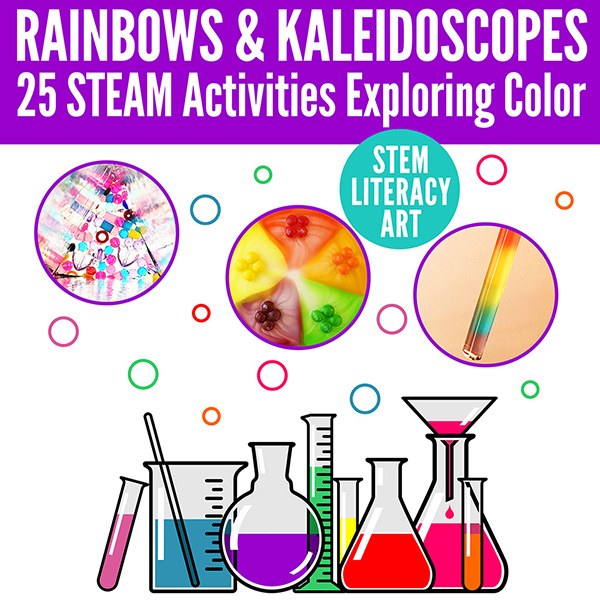Rainbow Magic Milk Science Experiment
Science or magic? This rainbow dancing Magic Milk Science Experiment is a fun way to explore the chemistry of surface tension.
This is one very cool experiment. To kids, it can appear more than a little magical but the effect is all science – no magic here. It’s a chemical reaction with surface tension in action! Check the explanation below the experiment procedure for more information about how and why the magic milk experiment works.
Rainbow Magic Milk Science Experiment
You will need:
- 1 Tablespoon dish soap/dishwashing liquid in a small container
- 1 1/2 cups of whole/full fat milk
- 10 drops of each of your chosen colours of liquid food colouring
- Dinner plate
- Cotton swab
Experiment procedure:
1. Pour about one tablespoon of dish soap into a small container. Set aside.
2. Carefully pour milk onto a dinner plate. It’s okay if you see bubbles in the milk. Let the milk sit for a minute so that it stops moving in the dish, becoming completely still.
3. Drop food colouring into the milk in the middle of the dish. Keep the colours separate. The food colouring may spread out slightly as you can see pictured in our photos. You can get creative with where you place the drops and space them out how you wish.
We used neon food colouring for this activity, which looks really cool but you can stick with a classic colour palette or experiment with using just warm colours or cool colours.
4. Dip a cotton swab into the dish soap.
5. Place the dipped cotton swab in the middle of a colour and observe the magical reaction! You should see the colours start to spread out towards the sides of the plate. They will continue to move and change over time.
You can repeat this step a few times, placing the cotton swab in different areas of the milk/colouring mix.
Tip: Kids can also take their dipped cotton swab and “draw” or “swirl” in the food colouring. Eventually the colours will mix together until the milk becomes one color.
If you allow the milk to sit a while before all colours are mixed completely together, you will see the milk continue to move and change in really neat ways, as you can see in the photos.
Watch over time how different things look!
6. When complete, dispose of milk in the sink.
The Science Behind the Magic Milk Experiment:
Milk as a liquid is composed primarily of water, with much smaller percentages of carbohydrate, fat, protein and vitamins/minerals. Milk composition does vary according to the species and breed of animal, the animal’s feed and the stage of lactation of the cow.
Because of its web of hydrogen bonds, water molecules are highly attracted to each other, resulting in a high surface tension.
When the dish soap is added to the milk the soap acts as a surfactant, reducing the surface tension of the milk so that the food colouring can spread out.
Surfactant (definition): substance such as a detergent that, when added to a liquid, reduces its surface tension, thereby increasing its spreading and wetting properties. (source: britannica.com)
At the same time, the phosphates in the dish soap are reacting with the fat and protein content of the milk – the soap is trying to grab the globules of fat out of the milk to break them down, just like dish soap breaks down the grease when washing up. This interaction causes the fat particles to move around, creating the resulting swirls of moving colour.
For more STEM fun involving magic and colour, be sure to check out our cool eResource – Rainbows & Kaleidoscopes: 25 STEAM Activities Exploring Colour (and Color!).
For fun, watch the magic milk experiment in action on a HUGE scale;

